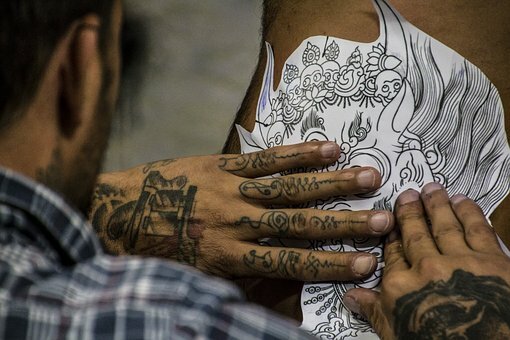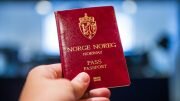Tattoos can pose a health risk
Tattoo colours can contain illegal aromatic amines and higher levels of heavy metals than recommended. The labeling of several of the products was also unsatisfactory, according to a survey conducted by the Norwegian Food Safety Authority.
In 2016, the Norwegian Food Safety Authority conducted a monitoring and mapping program in which tattoo colors from 12 importers were analyzed for the content of selected aromatic amines and heavy metals, in addition to microbiological quality.
Illegal aromatic amines
Several of the tattoo colours analyzed contained illegal aromatic amines and higher levels of heavy metals than recommended. The labeling of several of the products was also unsatisfactory. However, there was no microbial contamination like fungi or bacteria.
Analyses of the tattoo colours were found to contain illegal aromatic amines in eight of a total of 50 products on the Norwegian market. In addition, the brand check revealed the content of illegal aromatic amines in six of 34 products, as well as many cases of inadequate labeling. Of heavy metals, barium, lead and nickel were present in high volumes in 12 tattoo colours. Irregular findings have already been followed up by the Norwegian Food Safety Authority with different means depending on the severity of the findings.
Tattoo, Wikipedia
The word tattoo, or tattow in the 18th century, is a loanword from the Polynesian word tatau, meaning “to write”.The Oxford English Dictionary gives the etymology of tattoo as “In 18th c. tattaow, tattow. From Polynesian (Samoan, Tahitian, Tongan, etc.) tatau. In Marquesan, tatu.” Before the importation of the Polynesian word, the practice of tattooing had been described in the West as painting, scarring, or staining.
This is not to be confused with the origins of the word for the military drumbeat or performance — see military tattoo. In this case, the English word tattoo is derived from the Dutch word taptoe.
The first written reference to the word tattoo (or tatau) appears in the journal of Joseph Banks (24 February 1743 – 19 June 1820), the naturalist aboard explorer Captain Cook’s ship the HMS Endeavour: “I shall now mention the way they mark themselves indelibly, each of them is so marked by their humour or disposition”. The word tattoo was brought to Europe by Cook, when he returned in 1769 from his first voyage to Tahiti and New Zealand. In his narrative of the voyage, he refers to an operation called “tattaw”.
Tattoo enthusiasts may refer to tattoos as “ink”, “pieces”, “skin art”, “tattoo art”, “tats”, or “work”; to the creators as “tattoo artists”, “tattooers”, or “tattooists”; and to places where they work as “tattoo shops”, “tattoo studios”, or “tattoo parlors”.
Mainstream art galleries hold exhibitions of both conventional and custom tattoo designs such as Beyond Skin, at the Museum of Croydon. Copyrighted tattoo designs that are mass-produced and sent to tattoo artists are known as “flash”, a notable instance of industrial design. Flash sheets are prominently displayed in many tattoo parlors for the purpose of providing both inspiration and ready-made tattoo images to customers.
The Japanese word irezumi means “insertion of ink” and can mean tattoos using tebori, the traditional Japanese hand method, a Western-style machine, or any method of tattooing using insertion of ink. The most common word used for traditional Japanese tattoo designs is horimono. Japanese may use the word tattoo to mean non-Japanese styles of tattooing.
Anthropologist Ling Roth in 1900 described four methods of skin marking and suggested they be differentiated under the names “tatu”, “moko”, “cicatrix”, and “keloid”.
© NTB Scanpix / Norway Today





